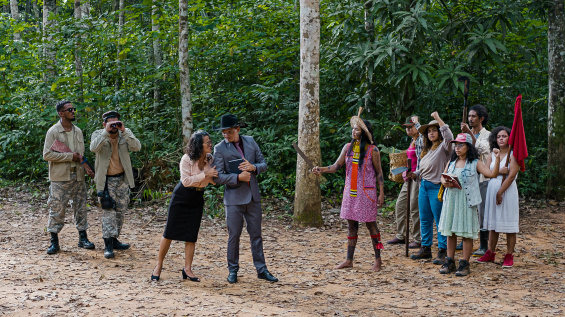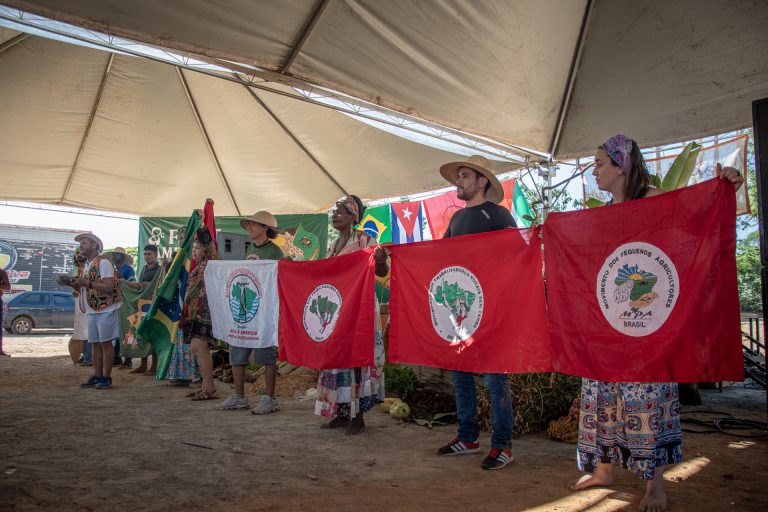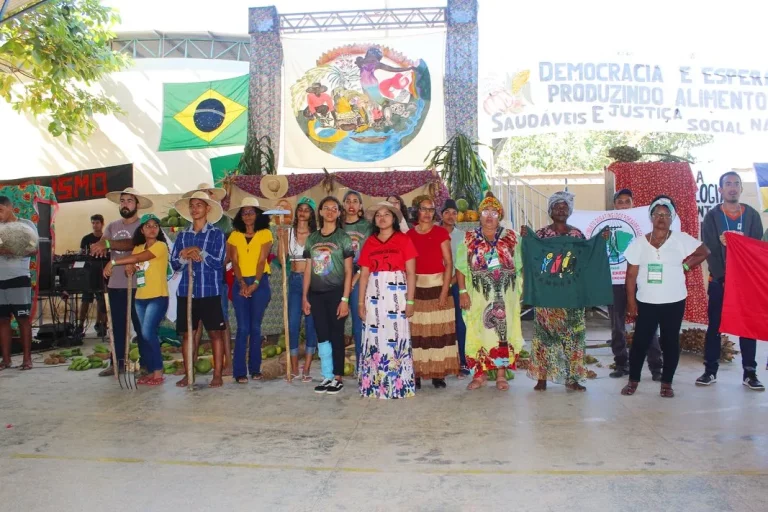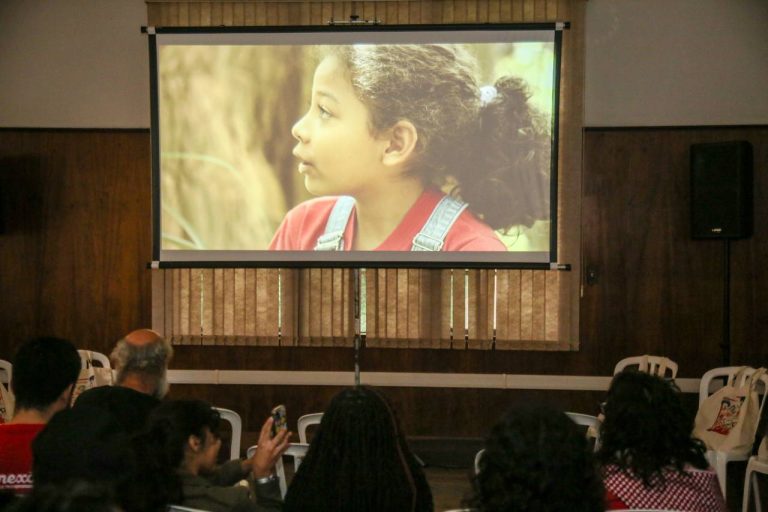The MST occupies museum in New York in show by Barbara Wagner and Benjamin de Burca
“Fala da Terra” is part of the “Five Times Brazil” exhibition and is now available to the public starting this week at the New Museum

From the MST web site
Starting this week, it will be possible to check out the “Five Times Brazil” exhibition at the New Museum, in New York, until October 16, with the exhibition of five works developed by the artists Bárbara Wagner (Brasilia, Brazil) and Benjamin de Burka (Munich, Germany).
Working together for a decade, Bárbara and Benjamin have produced films and video installations that feature protagonists engaged in cultural production. The duo typically collaborate with non-actors to make their films, from writing scripts to staging on-camera performances.
The resulting works are marked by economic conditions and social tensions present in the contexts in which they are filmed, giving urgency to new forms of self-representation through voice, movement and drama.
In this way, the show features five works that dialogue with the current period of sociopolitical turmoil in Brazil. Among them, Faz que vai [Set to Go] (2015), which focuses on four dancers whose practices complicate the relationship between traditional and contemporary frevo in northeastern Brazil; You are seeing things (2016), which delves into the brega music landscape of Recife (PE); Terremoto Santo (2017), which focuses on gospel produced and performed by young preachers, singers and songwriters from the interior of Pernambuco; Swinguerra (2019), commissioned for the Brazil Pavilion at the 58th Venice Biennale, which analyzes dance competitions in Recife (PE); and a new play, Fala da Terra (2022), which presents the practice of the Banzeiros Collective, a theater group composed of members of the Landless Rural Workers Movement (MST) – an organization that has been fighting for agrarian reform and against the social inequalities that affect rural workers in Brazil for almost forty years.
Together, the works in the exhibition highlight the strength and complexity of artistic expression and demonstrate how culture can provide deep sources of resistance and community.
The MST Banzeiros Theater Collective, part of the work “Fala da Terra”, is composed of activists from the movement in the Amazon region, which emerged in 2016, after the Landless Youth Pedagogical Encampment, held on the S curve, in Pará. The encampment takes place annually in the same place where the Eldorado dos Carajás massacre took place 25 years ago, on the road that connects Marabá to Parauapebas.
Kananda Rocha Xavier, a member of Banzeiros, talks about the meanings of the experience of integrating the work:
“For us, as the Banzeiros Collective and activists who work in this field of art, ‘Fala da Terra’ is very symbolic because it gives voice to the people who are protagonists of the struggle and resistance in the southeast of Pará, in the Amazon region, who range from the indigenous, the people living along rivers, the peasants, who are the subjects who are made unfeasible by their struggle, but who are on the front lines, fighting for rights, for land, for healthy food.”
“Five Times Brazil” is curated by Margot Norton, curator of Allen and Lola Goldring, and Bernardo Mosqueira, ISLAA Curatorial Fellow, and is accompanied by a fully illustrated catalog published by the New Museum. The show’s catalog includes a conversation between the artists and Margot Norton; and texts by Vivian Crockett, Bernardo Mosqueira and Wendelien van Oldenborgh.
From August 26 to October 30, the work will also be exhibited in Brazil at the Museu de Arte de São Paulo Assis Chateaubriand (MASP), during the exhibition “Brazilian Stories”.



